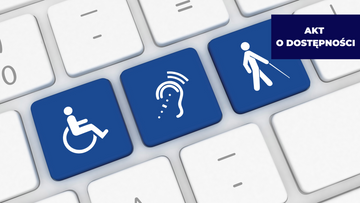At first glance, the trademark registration procedure seems simplified and relatively accessible to applicants. In reality, completing the form and paying the fees may not be sufficient to obtain trademark protection. This article will teach you how to conduct the trademark registration process in a way that minimizes the risk of being denied protection.
In our previous article, we explained what a trademark is, what signs can be registered, why brand protection is important, and what benefits it brings. You can find the article here.
In today's article, we will focus on the trademark registration process and the details that should be kept in mind and which may be decisive in granting trademark protection.
Submitting an application – where, how, when?
An application for trademark registration is submitted to the Polish Patent Office. The form is available on the Polish Patent Office's government website. The application can be submitted in person at the Patent Office's office, by mail, or online.
There is no time limit for filing a trademark application. You can register at any time.
Where to start?
In fact, the trademark registration process begins some time before the actual application is filed.
I Preparation
Investing in building a brand based on a selected symbol requires two steps: needs analysis and symbol availability testing.
The analysis involves considering the entrepreneur's needs and the goods and services they offer. Defining this scope will help guide the subsequent selection of appropriate classes of goods and services, which must be made during the application process.
A trademark availability check involves verifying that the mark hasn't already been registered by someone else or conflicts with existing trademarks. This helps avoid conflicts during the registration process and prevents opposition proceedings, which you'll read about later in this article.
Preparation is a crucial step in trademark registration – as mentioned in the aforementioned article, not all trademarks can be registered. In this regard, it's worth seeking the services of a patent attorney, who can assess the chances of protection and suggest the next steps to ensure the right of protection is granted. They can also examine the trademark's registrability .
II. Submitting an application
At this stage, an application should be submitted to the Patent Office of the Republic of Poland.
The application must include the applicant’s details, a description of the form of the mark (trademark form: word, figurative, figurative-word, etc.) and the goods and services selected in accordance with the Nice Classification.
What is the Nice Classification?
The International Classification of Goods and Services, established at the Nice Conference (hence the common name "Nice Classification"), is a system divided into categories and subcategories, which define the range of goods and services offered by businesses. It consists of 45 categories, or classes, including 34 classes of goods and 11 classes of services. The number of classes you select in your application determines the administrative fees. The more classes you select, the higher the application fee you must pay.
The amount of the fee also depends on other factors, such as the territorial scope of the protection sought and the form of the trademark.
III Preliminary examination
The Patent Office will immediately (but no later than two months) upon receiving your application, verify its formal and legal validity and disclose information about the filed application. This allows other entities to review the trademark. This allows them to submit comments and indicate reasons why the trademark should not be registered.
IV Substantive examination
The Patent Office then examines the trademark's registrability. If it determines that the submitted designation falls into the category of designations excluded from registration, it issues a decision refusing protection. This refusal may apply to all or part of the requested scope of protection.
5th Announcement
If your trademark application meets all the criteria and the Patent Office finds no obstacles to registration, it will publish your trademark application in the Patent Office Bulletin of the Republic of Poland (BUP).*
VI Opposition Period
From the date of publication of the application in the Bulletin, third parties have 3 months to file an opposition to the trademark application.
What does this mean in practice?
The institution of trademark opposition has two sides. On the one hand, anyone who files an application hopes that no one will file an opposition against their trademark, and that the entire procedure won't be prolonged.
On the other hand, this allows entrepreneurs to monitor competitors' activities and raise concerns when they notice similarities to their own registered trademark. While this approach brings tangible benefits, it requires constant monitoring of advertisements in the Public Employment Office (BUP).
Who can file an opposition? A person entitled to an earlier trademark, an earlier personal right or property right, or an authorized person to exercise rights arising from an earlier application for a geographical indication or appellation of origin, provided that these indications are registered. Importantly, an earlier priority trademark application can also be cited as the basis for an opposition, provided that protection has been granted for it.
If an opposition is filed, the Patent Office shall immediately notify the applicant of this fact and provide information on the possibility of an amicable settlement of the matter between the applicant and the opponent.
However, if no settlement is reached within this two-month period, the Patent Office will request the applicant to submit a response to the opposition.
Importantly, this is the only time when the applicant can claim that the earlier mark has not been genuinely used during the continuous five-year period preceding the filing date of the trademark application being opposed, and request evidence of its use. Genuine use of the trademark is crucial here.
Is there anything else the opponent can do at this point? Yes. After submitting the applicant's response, the opponent must fully address all the circumstances raised in the response and provide all evidence supporting the previously cited circumstances. Failure to do so will result in the opponent losing the opportunity to raise these matters at later stages of the opposition proceedings.
After presenting the positions of the applicant and the opponent, the Patent Office may finally make a decision on the merits of the case, i.e., dismiss the opposition or uphold it in whole or in part. If the decision still raises doubts for the opponent, they may file a request for a reconsideration of the hearing.
This stage of the process largely determines the duration of trademark registration. Generally, it lasts approximately 6 to 8 months, but in the case of opposition proceedings, this period can extend to several years. Therefore, it is crucial to meticulously complete the preparatory and application stages. Properly completing these stages can prevent significant delays in the registration process.
VII Registration
If no one has filed an objection or the Patent Office does not consider the objection to be justified and dismisses it, the applied-for trademark is registered.
However, it's important to remember that under a registered trademark, use of the trademark is limited to the territory and form of designation specified in the application, as well as the time period – protection lasts for 10 years, with the possibility of extension. Every 10 years, you must renew your rights and pay the appropriate fee.
Summary
The benefits of registering a trademark are undeniable – protecting your brand, providing a tool to fight competition, brand recognition and reputation building, and financial opportunities are attractive to every entrepreneur operating in the e-commerce industry.
Although filing a trademark application seems to be a simple procedure, there are numerous detailed issues that may influence the Patent Office's decision on registration.
Since its inception, our law firm has been collaborating with patent attorneys who will help you through the trademark registration process and provide support at every stage.
If you want to effectively protect your brand, contact us – we'll support you and guide you safely through the registration process. You can find our contact details here .





